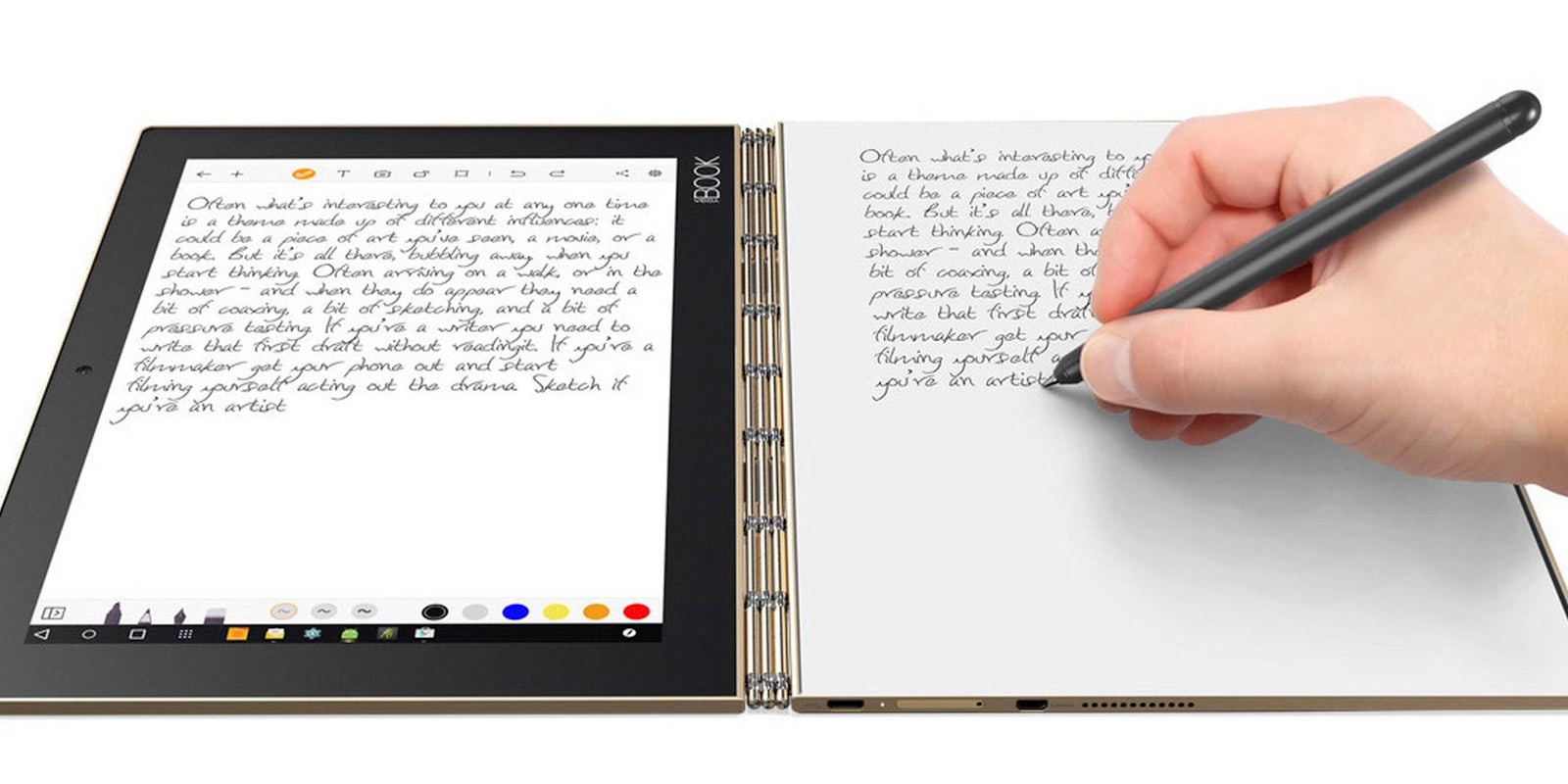For years the tech world has pushed the idea that tablets could replace laptops one day, but if you’ve ever used one as your main machine you know we’re not quite there yet. The best of the best, like Microsoft’s underrated Surface, are still glorified laptops and while the latest iPad made great strides it still requires extra accessories to become your day to day machine. There’s hope on the horizon however, and the light that’s shining over is from Lenovo.
Lenovo’s Yoga Book is the company’s latest tablet computer, a familiar idea that reimagines the tablet as a two-panel experience. Unlike a traditional laptop the Yoga Book doesn’t feature a keyboard, rather it has a screen and a second touch interface. The second touch interface doubles as a “keyboard” and a digital writing space. We put keyboard is quotation marks because the Yoga Book doesn’t feature physical keys.
Instead when you need to type a glowing touch keyboard and trackpad appear on the second touch interface, allowing you to type like you’re on a laptop without having to press any physical buttons. By utilizing haptic feedback the Yoga lets your fingers know when you’ve hit a key, all without physically having to press a button.
The secondary touch interface also allows you to digitally write or take notes digitally on the Yoga via a Wacom technology based pen stylus. If you’re a sucker for writing with pen and ink the Yoga still has you covered. You can put a piece of paper on the top of the touch interface and have your writing instantly digitized as you write.
The Yoga also has a reversible main screen, similar to what is currently available on Lenovo laptops, that allows the whole thing to be used as one-handed tablet. Closed, the machine is under 10mm thick, and features a 10.1-inch, 1080p touchscreen display, 8-megapixel camera, 4GB of RAM, 64GB of storage, and a microSD card slot.
If you’d like to know more, The Verge has an in-depth feature about the development of the Yoga that is well worth reading. The Yogo will launch sometime in October at $499 for the Android version and $550 for the Windows 10 version.


